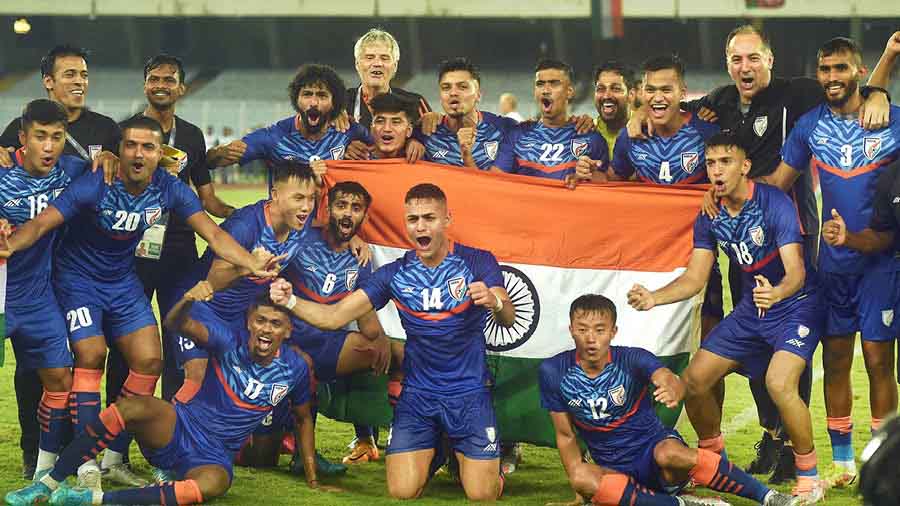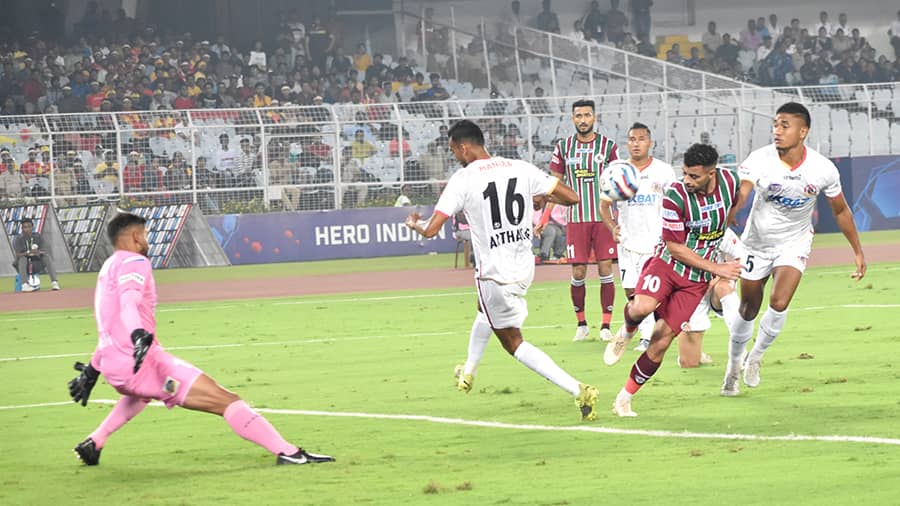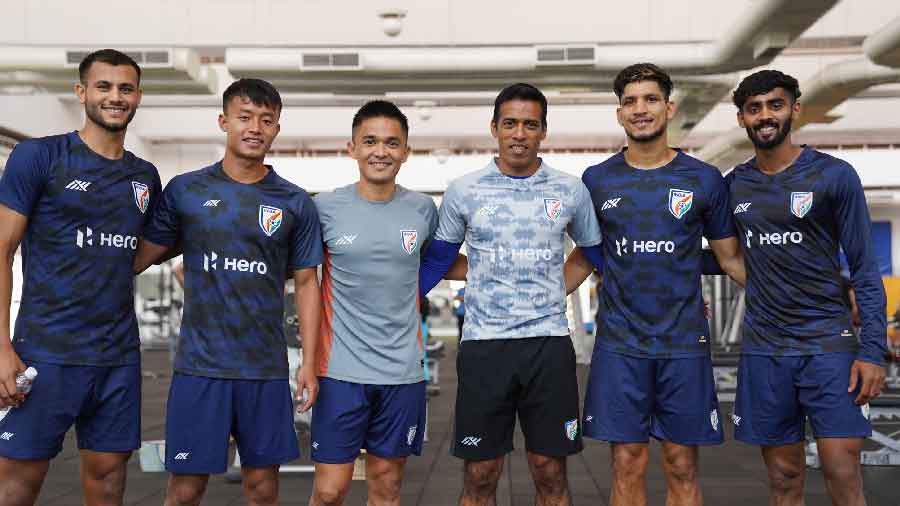India is poised to break into the top-100 countries in men’s world football. The country attained its best ranking in 1996: 94th. It took 21 years for India to break into the top-100 again. It achieved the ‘feat’ in May 2017 and climbed to the 96th spot that July. However, like the previous time, the ranking started dropping the same year. In 2019, India was 97th. In the latest FIFA rankings, India is 101st after climbing five spots. Does the latest uptick in ranking signify a sustained improvement in standards? Can we dare to indulge ourselves with mothballed dreams of a place in the World Cup?
Heart-breakingly, as a fan and a keen follower of Indian football for five decades, I do not feel particularly hopeful. We lag too far behind even the Asian standards to dream of catching up with the best in the world. Not that even the Asian standard is anything to scoff at any more! The 2022 football World Cup had five participating Asian countries (without counting Australia). Japan and South Korea progressed beyond the group stage, and Iran and Saudi Arabia exceeded expectations.
India’s recent showing, in contrast, has left a lot to be desired, despite the team winning the SAFF championship (2021-22), which had lower-ranked countries like the Maldives, Nepal, Bangladesh and Sri Lanka as participants. The insipid display of India against Bangladesh, Sri Lanka and Nepal during the round-robin stage must have dented the team’s confidence in rising through the Asian ranks. India lost to Bahrain (1-2), Belarus (0-3) and Jordon (0-2), before beating Cambodia, Afghanistan and Hong Kong in the AFC Asian Cup qualifier.
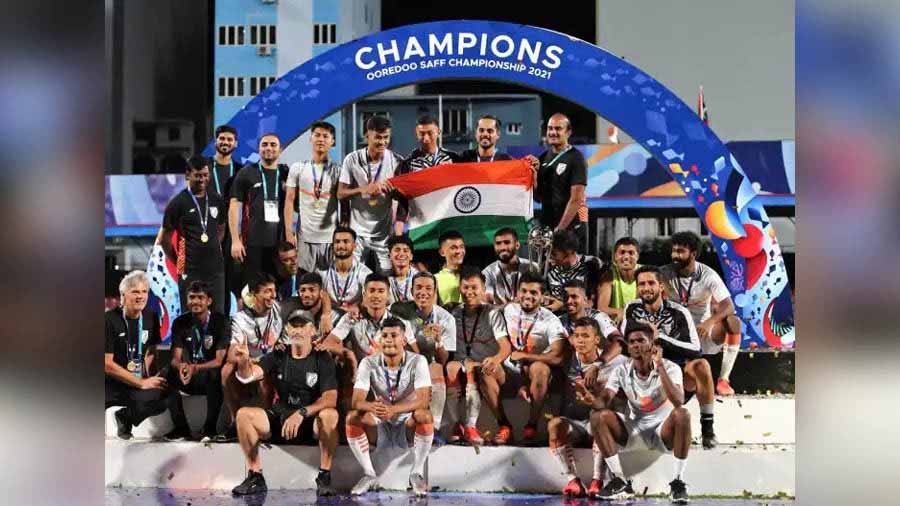
India’s recent showing has left a lot to be desired, despite the team winning the SAFF championship (2021-22) TT Archives
More recently, India lost to Vietnam (0-3) and failed to beat the much lower ranked Singapore (1-1). India’s inconsistency is highlighted in its 0-6 drubbing by the UAE in a friendly match despite the same team fighting to a 0-0 draw against Qatar (FWC qualifier) and China (in a friendly) not long ago. Even though the quota of Asian countries will increase from next FWC, no one expects India to qualify soon, notwithstanding its recent triumph over Myanmar (1-0) and Kyrgyzstan (2-0).
Past laurels
Historically, India’s football journey was creditable till the mid-1980s. In the 1948 Olympics, India lost to France by a slender 1-2 margin. In the Asian Games, India clinched gold by beating Iran 1-0 in 1951 and then again in 1962 by beating South Korea 2-1. In between, India beat Australia in the 1954 Olympics at Melbourne and eventually came fourth. India stood second in the 1964 version of the Asian Cup. In Malaysia’s Merdeka Cup, India was the runners up in 1959 and 1964, and third in 1965 and 1966. In 1970, India clinched their last medal at the Asian Games – a bronze, by beating Japan 1-0.

The Asian Games bronze-winning Indian team of 1970 AIFF
Thereafter began a decline, though performances against stronger opponents in the 1982 Asian Games and the Nehru Cups between 1982 and 1984 earned the country’s football team kudos. In the 1986 Merdeka Cup, India beat South Korea 4-3. South Korea advanced enough since then to clinch the fourth position in the 2002 World Cup.
Mid-1980s were also the time Indian football started experimenting — foreign coaches replaced Indian ones at the national and club levels and foreign players were recruited by the clubs. However, the journey between 1985 and 2022 reminds one of the concept of correction (e.g. taking painkiller for toothache), corrective action (e.g. root canal treatment for toothache) and preventive action (e.g. oral hygiene and brushing technique to avoid toothache) that was once taught by the ISO certification guys.
By bringing in foreign players, clubs may have won some extra silverware, but there was no 'rub-off' effect on the Indian players — correction, after all, can only provide immediate relief. Bringing in a foreign coach who has seen and done it all is a comparatively longer-term strategy. However, Ciric Milovan to Igor Stimac, everyone found it difficult to make an impact with already matured players — a not-so-successful corrective action.
Tale of two leagues

A match in progress during the ISL, the No. 1 Indian league TT archives
There are two national football leagues: the ISL, the No. 1 Indian league, and the I-League. The 12 teams of the I-League and 11 teams of the ISL have created enormous employment opportunities for our footballers, support staff and others associated with the game. Unfortunately, so much involvement, interest and incentive have not translated into success for India at the international level.
If we assume that the difference in skill is zero at birth, the more we delay benchmarking, the worse the result. The FIFA U-17 Women’s World Cup 2022 is an example. India lost to the USA (0-8), Brazil (0-5) and Morocco (0-3). The male counterparts did not do much better in 2017, losing to Ghana (0-4), Columbia (1-2) and USA (0-3). So the gap is wide even at the junior level. And the dreadful prospect of being the punching bag stops us from even dreaming of hosting a men’s football World Cup.
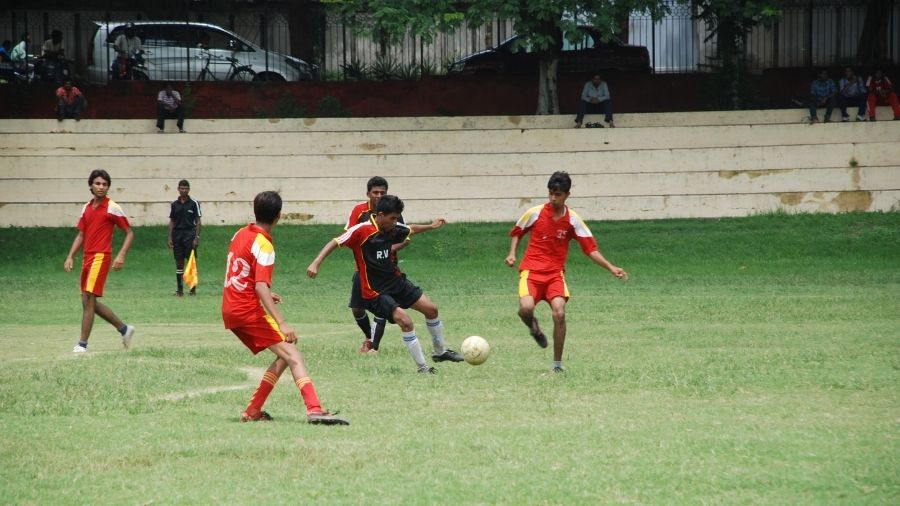
Football is probably the least demanding game as far as infrastructure is concerned. Latin Americans have won 11 of the 23 World Cups so far despite not being affluent TT archives
The initiatives at the grass-root level are not enough to provide a steady supply of footballers with strong basic skills — a possible preventive action. Football is probably the least demanding game as far as infrastructure is concerned. Latin Americans have won 11 of the 23 World Cups so far despite not being affluent. Many Brazilian footballers come from the favelas (slums).
How to be better
Robust infrastructure is not always a guarantee of success in sports. Despite excellent infrastructure in the US and Europe, it is the African runners who dominate middle and long distance races despite having access only to makeshift facilities. Knowhow is perhaps the more important determinant of sporting success. India can try providing the best coaching resources abroad to players who are around 10 years old to bring out the best in them.
The next most important factor is the unending desire of players to toil hard and improve. It’s good to see that Goa and the Northeast are doing better by fostering the game at the youth level but the overall picture across India is still ordinary. We need to reach more kids and offer football as a way of life, especially to the underprivileged. Former footballers can help scout raw talent with the necessary physical attributes. The kids then need to be in a residential facility under the tutelage of foreign physical and technical trainers, and benchmarked against their peers at the world level. The results will follow over the next decade and the much-desired 'rub-off' effect will kick in.
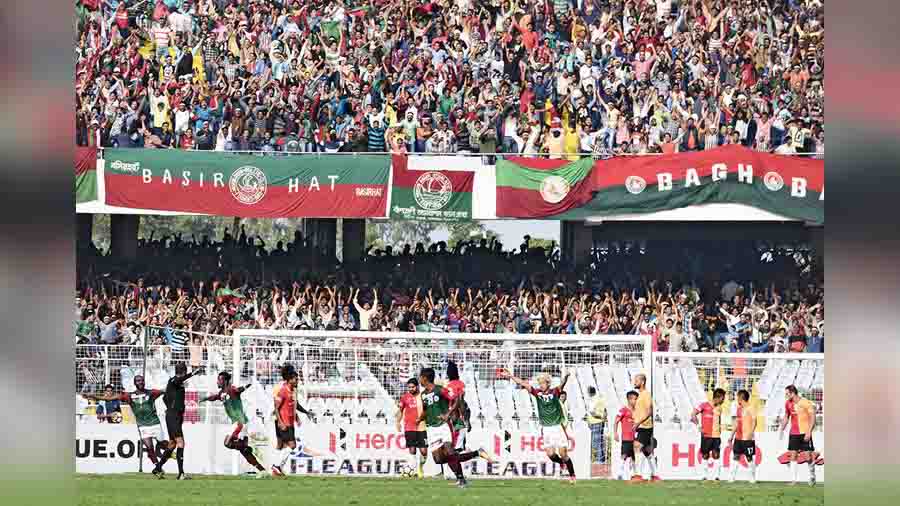
The millions of Indian football fans play an important factor: community participation TT Archives
The millions of Indian football fans will fulfil the third most important factor: community participation. Scales can be decided by the investment enthusiasm shown by the clubs, corporates and the government working through a public-private partnership model. ‘Catch them young’ and ‘Start small and scale fast’ need to be the mantra going forward.
[Dr Subhasis Ray is a management consultant and teacher at IISWBM. He is the author of the book Management of the Cricketing Ecosystem — An Analytic Approach (Springer)]
